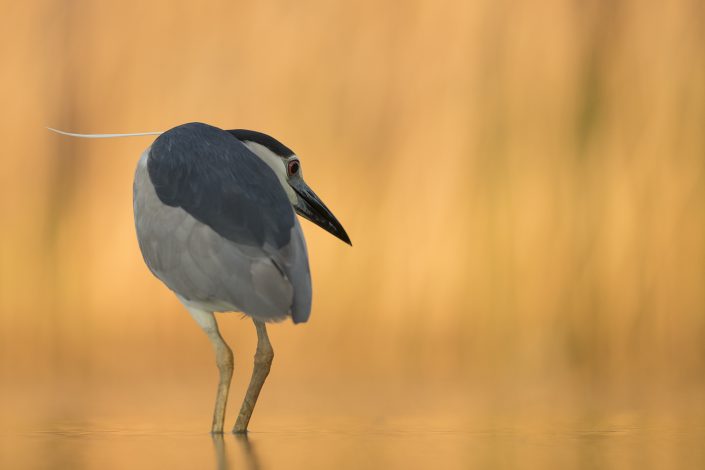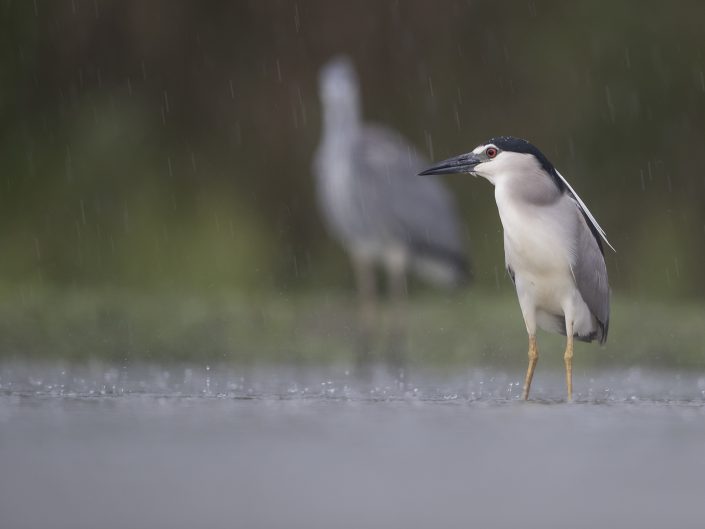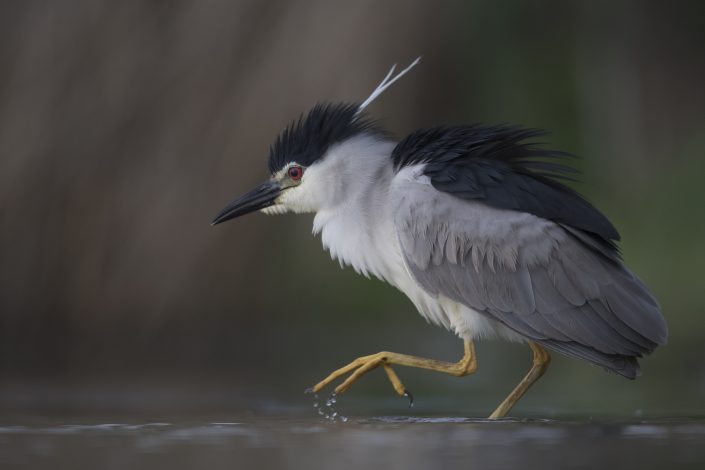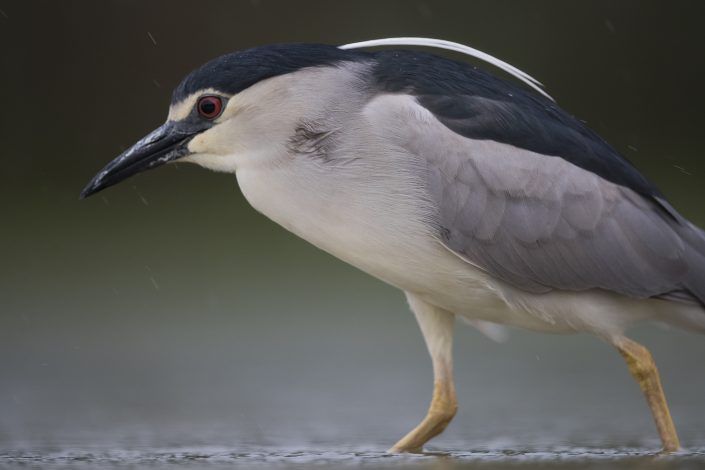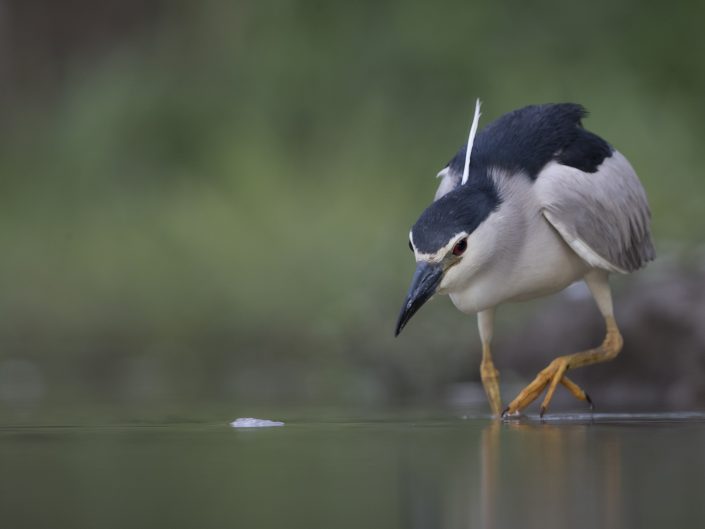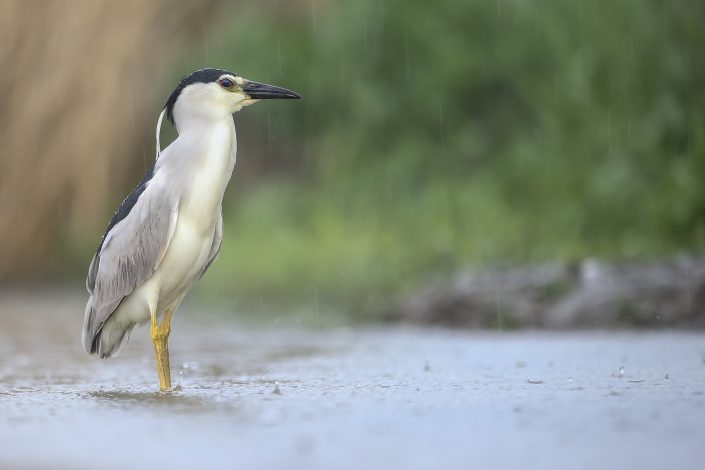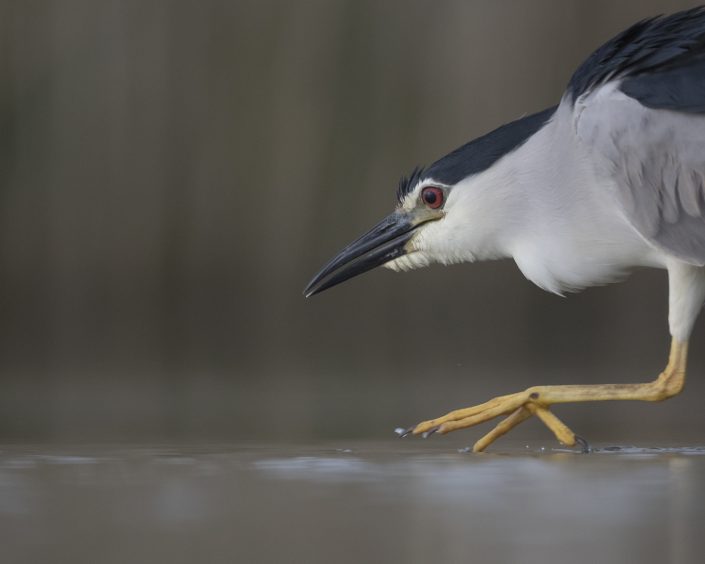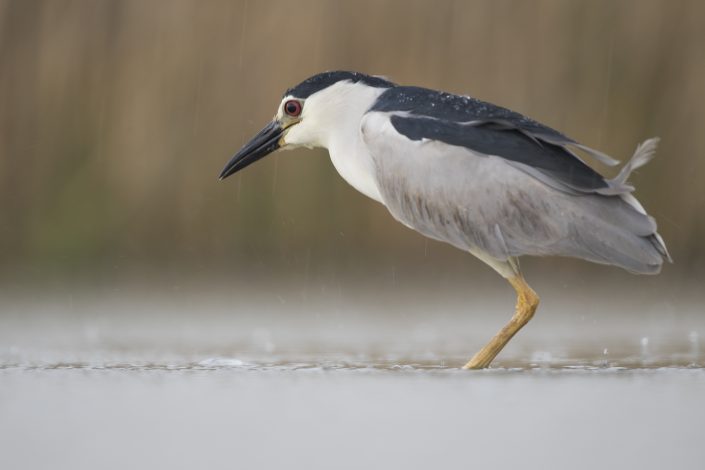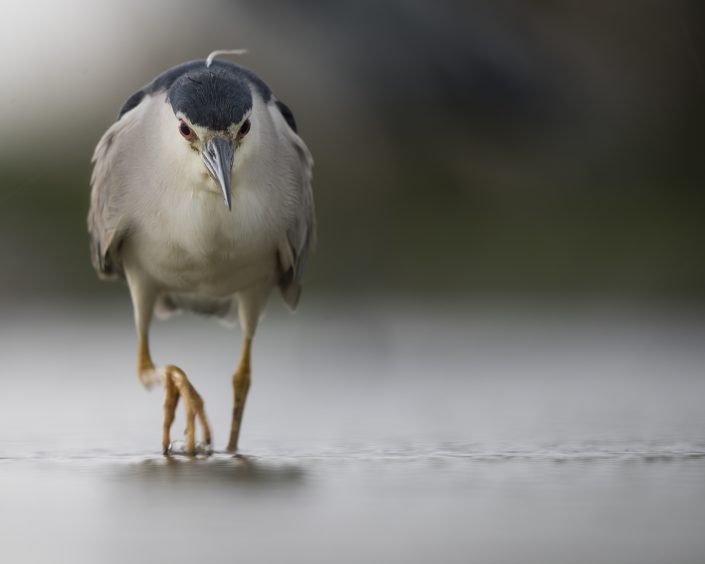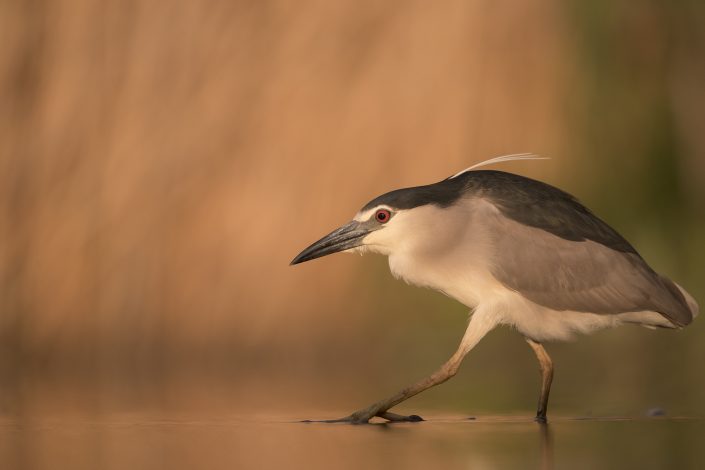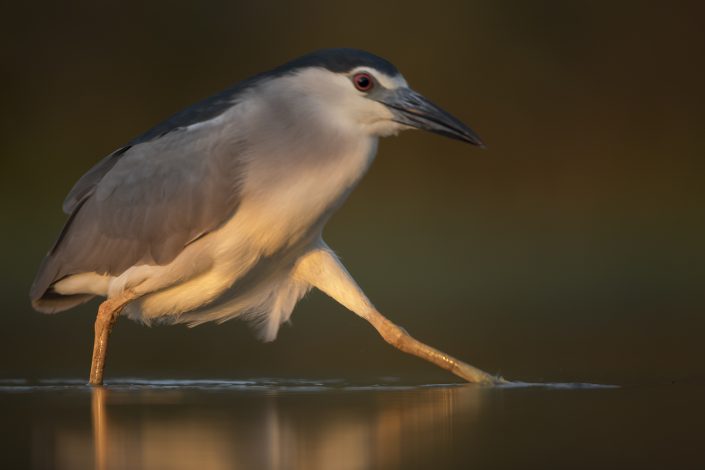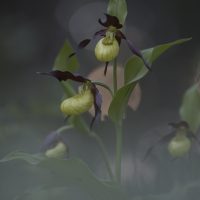This post is also available in: Swedish
Black-crowned night heron – Nycticorax nycticorax
Black-crowned night heron – Nycticorax nycticorax
The black-crowned night heron (Nycticorax nycticorax), commonly shortened to just night heron in Eurasia, is a medium-sized heron found throughout a large part of the world, except in the coldest regions and Australasia (where it is replaced by the closely related rufous night heron, with which it has hybridized in the area of contact). Adults are approximately 64 cm (25 in) long and weigh 800 g (28 oz). They have a black crown and back with the remainder of the body white or grey, red eyes, and short yellow legs. They have pale grey wings and white under parts. Two or three long white plumes, erected in greeting and courtship displays, extend from the back of the head. The sexes are similar in appearance although the males are slightly larger. Black-crowned night herons do not fit the typical body form of the heron family. They are relatively stocky with shorter bills, legs, and necks than their more familiar cousins, the egrets and “day” herons. Their resting posture is normally somewhat hunched but when hunting they extend their necks and look more like other wading birds.
Immature birds have dull grey-brown plumage on their heads, wings, and backs, with numerous pale spots. Their underparts are paler and streaked with brown. The young birds have orange eyes and duller yellowish-green legs. They are very noisy birds in their nesting colonies, with calls that are commonly transcribed as quok or woc.
These birds stand still at the water’s edge and wait to ambush prey, mainly at night or early morning. They primarily eat small fish, crustaceans, frogs, aquatic insects, small mammals, and small birds. During the day they rest in trees or bushes. N. n. hoactli is more gregarious outside the breeding season than the nominate race.
It sounds like this
Recording by Stanislas Wroza from Xeno canto








